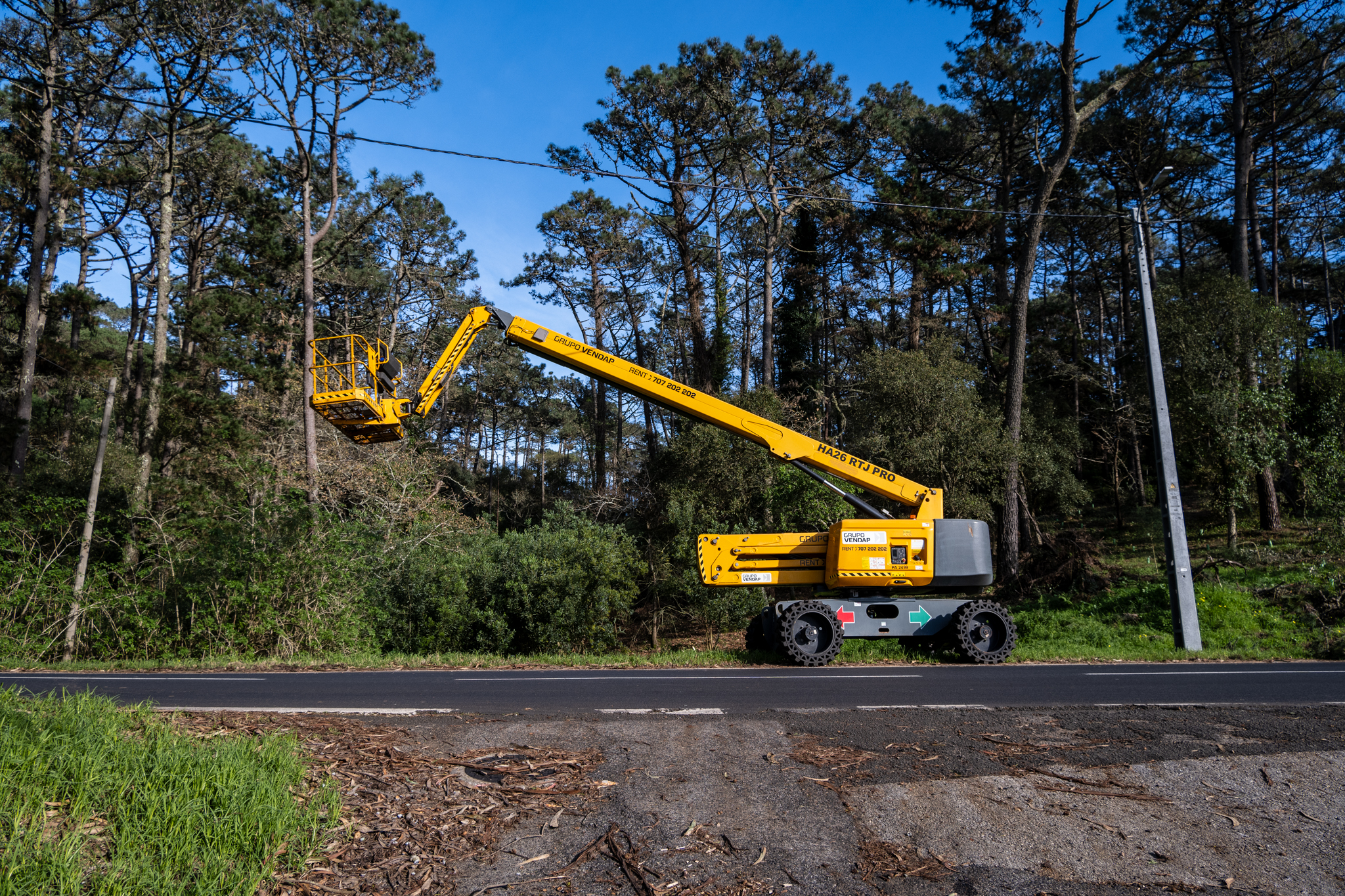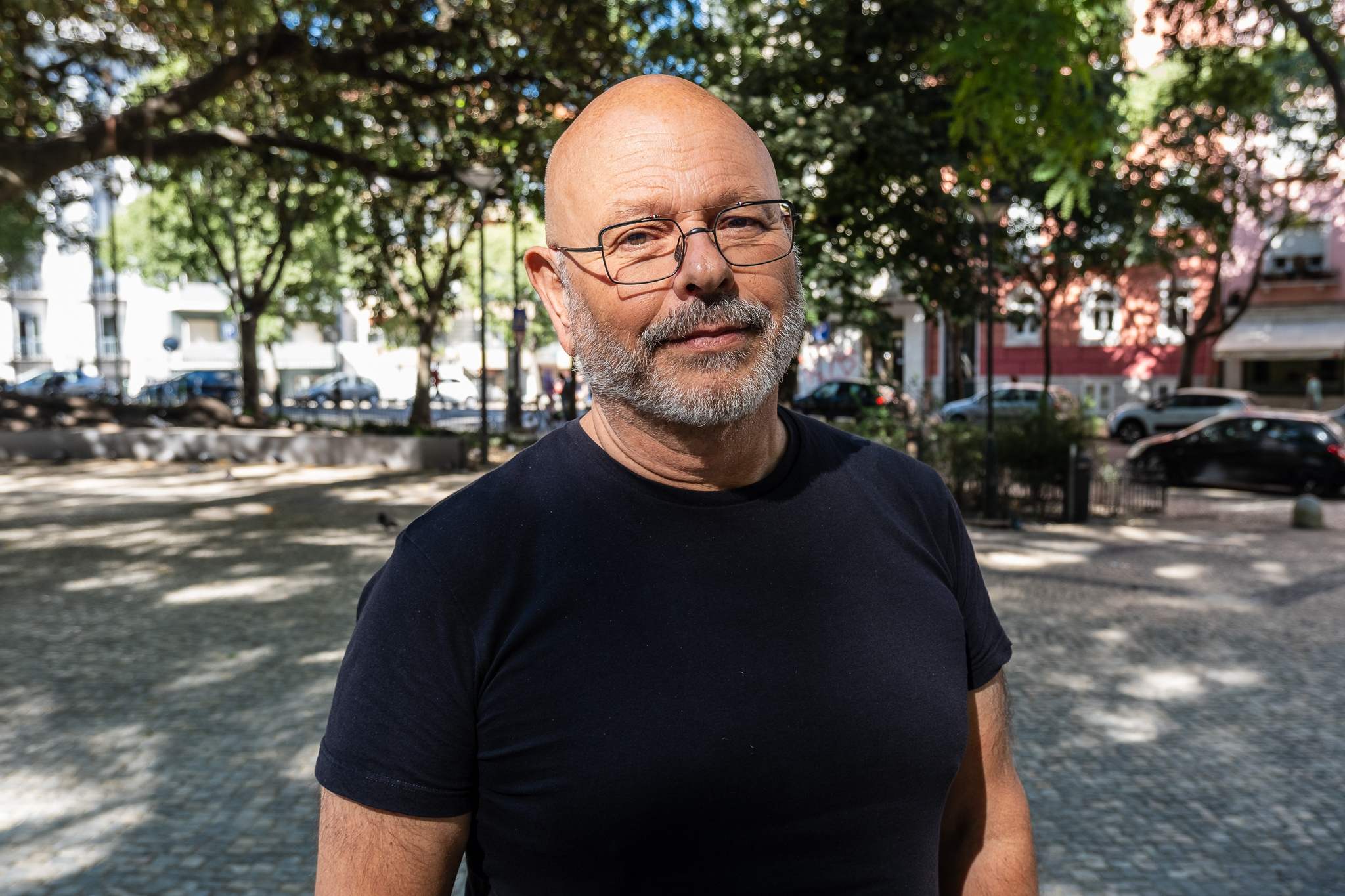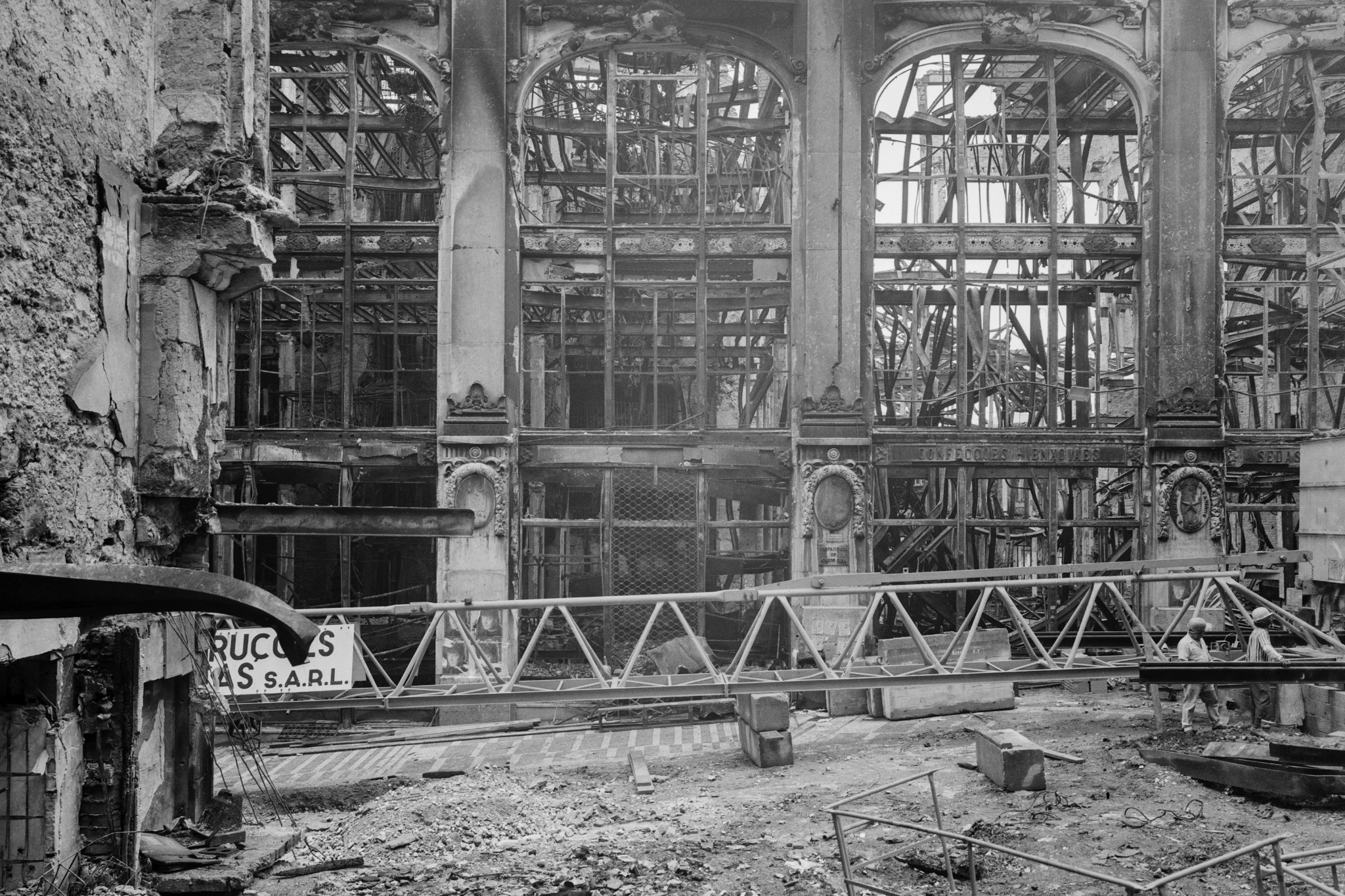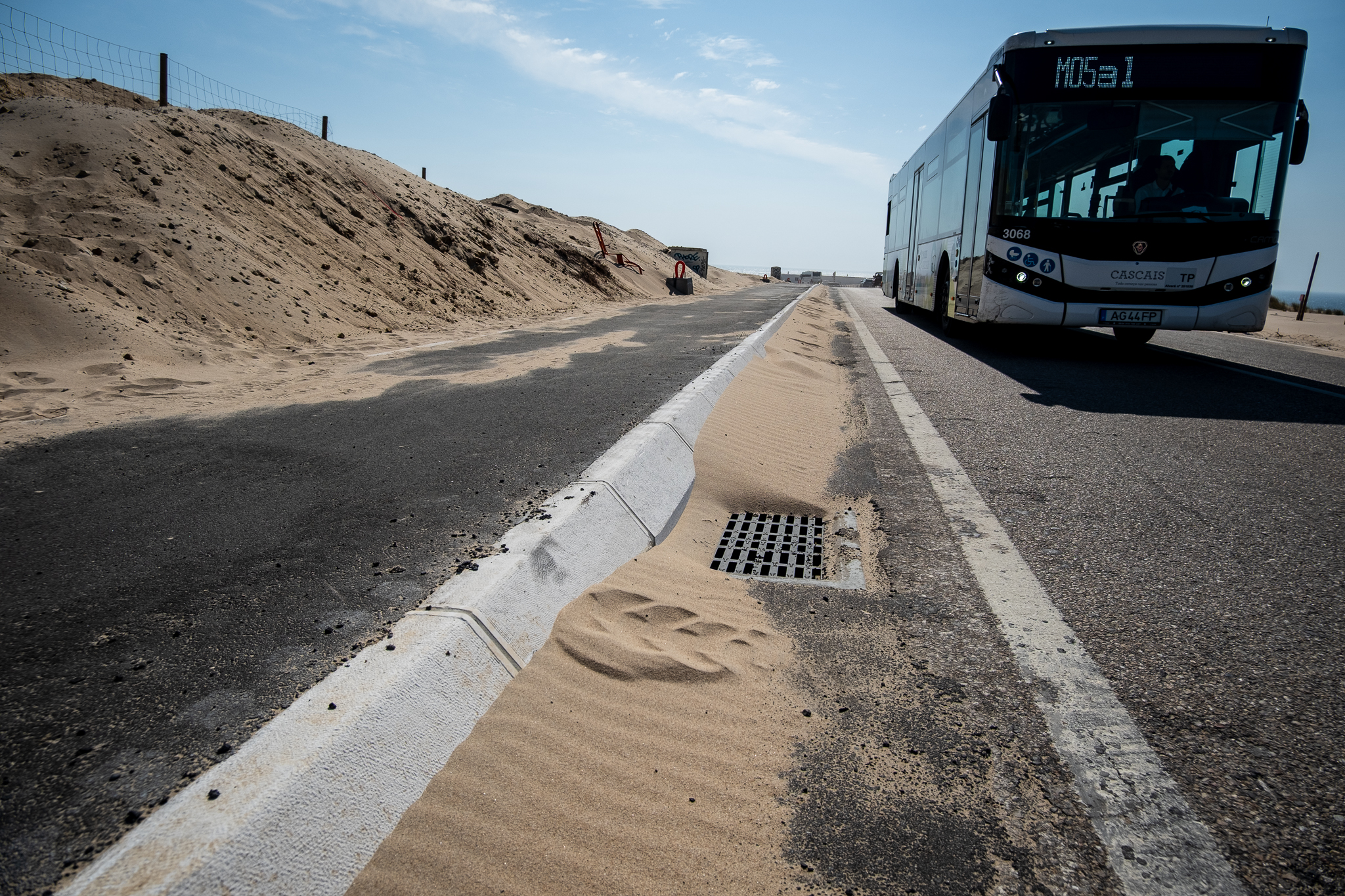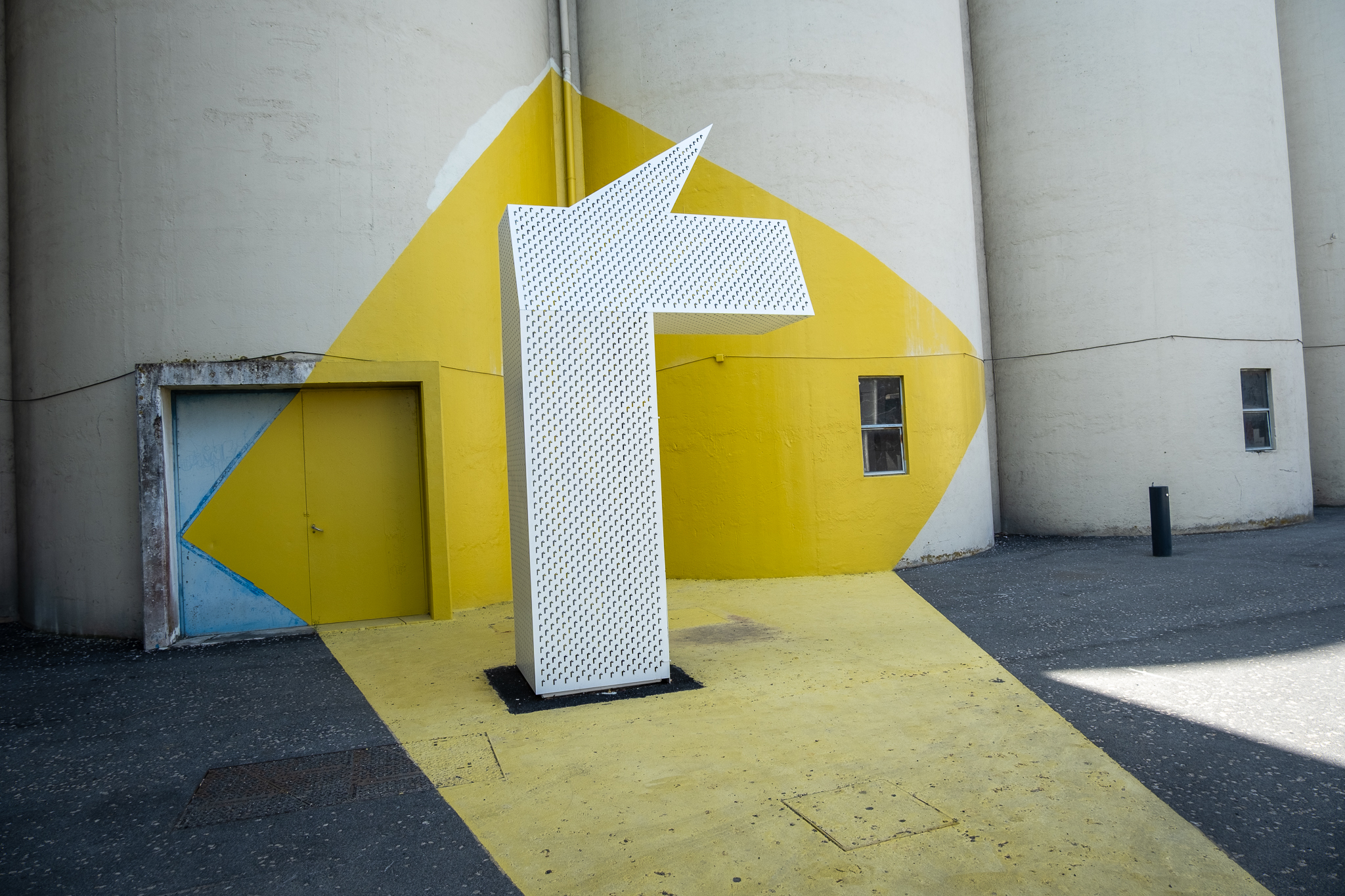Residents, informal groups and environmental associations are concerned about the felling of several trees in the middle of the Sintra-Cascais Natural Park. Infraestruturas de Portugal (IP), which is responsible for the work, justifies the action with the aim of promoting road safety and establishing fire protection zones.

More than two dozen people gathered on Sunday afternoon to protest against an operation to cut down and prune trees in the Sintra-Cascais Natural Park. The work being carried out by Infraestruturas de Portugal (IP) along the EN 247, the road linking Sintra and Colares to Cabo da Roca, has started to raise doubts among residents, informal tree protection groups and environmental associations. The lack of clear and transparent information is the main reason for the uproar.
According to an official communication from IPThis pruning and felling work along the EN 247 is part of a wider project. "preventive maintenance intervention aimed at mitigating risks to user safety" of this road is being carried out on a 16-kilometer stretch that takes in the parishes of Sintra and Colares, in the municipality of Sintra. "This is an ordinary road maintenance intervention, carried out as part of Infraestruturas de Portugal's strategy of continuously improving the quality levels of the National Road Network at the service of people's mobility"reinforced IP. The contract was due to be completed by December 30, but was delayed.



Susana Félix drives along the EN 247 every day to work and one day she noticed some work going on around the trees. "I started to see trees being cut down at one end and I thought it was an occasional thing, a tree that had been damaged. Then I started to see it grow to such proportions that it seemed like an atrocity"he tells LPP. "What you see here as a warehouse is nothing. Several truckloads of firewood have gone up from here." Susana filmed and photographed what had happened and tried to mobilize the Friends of Sintra Trees Group, to which she informally belongs. She called there, WhatsApped there, made several contacts without achieving much initial mobilization. "Initially, I got practically no response from anyone and I was very disappointed. But then very slowly people started to come forward."
The protest that took place on Sunday afternoon attracted around two dozen people. And also some organizations, such as the environmental association ADN, a Civic Platform in Defense of Treessthe movement Sintra Without Herbicides or the party Free. "I think this is extremely serious. People have to become aware of the importance of trees. We have to have more consideration and affection for what they represent on a planetary level"says Susana. "Let's see what comes of it, because I think that if a reasonable number of people come, we can do it, work on it and get something done in the short term."

During the gathering, which took place on the side of the EN 247, where some of the wood resulting from IP's work had accumulated, contacts, ideas and, above all, many doubts were exchanged. Everyone (or almost everyone) had read IP's communication, but it was not very clear about the context of the intervention underway. After all, why are these cuts necessary? How many trees are being affected? Where is the wood going? "What's going on behind all this? Where are the profits from all these trees being cut down going? Who is benefiting from this? I think it all has to come out, we have to know"Susana told us, calling for more detailed and clear communication to the population about the actions carried out in the forest, especially in sensitive areas such as the Sintra-Cascais Natural Park. Transparency in this type of process is essential to prevent suspicions, rumors and doubts, allowing for a more comprehensive and informed understanding on the part of the community.
Florbela Frade, from the Friends of Sintra Trees Group, agrees. "You have to be informed. The population has to know why. There has to be a phytosanitary report on the state of the trees to see if they were diseased or not." Florbela lives in the municipality of Sintra, like Susana, and decided to take part in this protest after becoming aware of the situation on social media. "I don't think these trees were diseased. Some of them could probably have been out of balance, but that can be solved by pruning or putting up guards." There, on the side of the EN 247, we see several large, apparently healthy pine tree trunks lying. Along the road, signs of thinning are visible, although the road is still surrounded by large, dense trees. "I came from Colares and along the way I saw several trees cut down"describes the worried popular. "As you can see, they felled a number of pine trees, some of them quite old, as you can see by the width of the trunks. How is it possible to do this in the middle of the Sintra-Cascais Natural Park? Nobody understands this."
IP explains the intervention

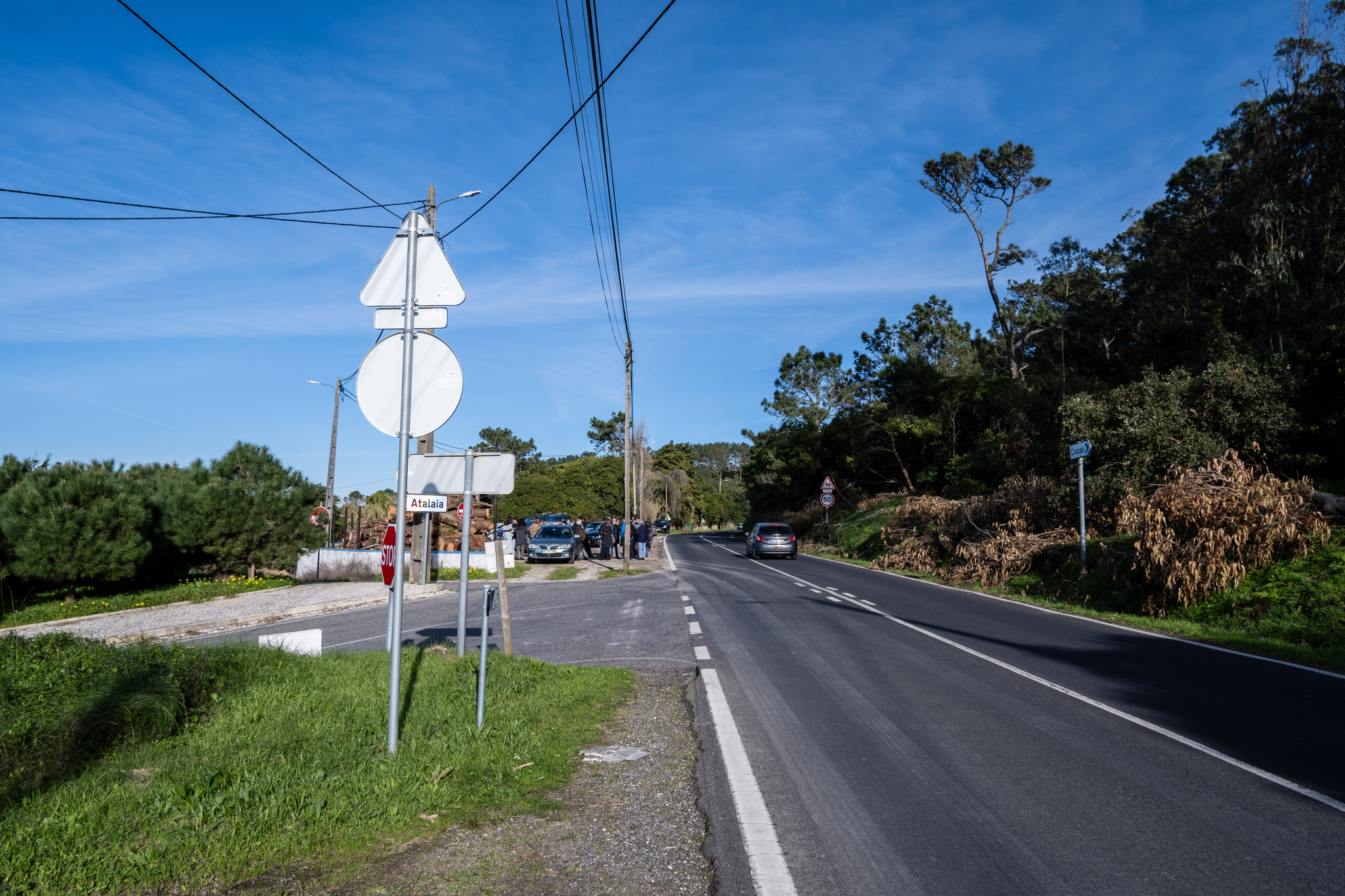
Infraestruturas de Portugal (IP) explained to LPP that the intervention on EN 247 "It was the last phase of the work that began around two years ago" for the "execution of Fuel Management Bands (FCG)". In other words, to create fire protection areas, "in order to ensure safe traffic conditions for people and goods on the roads under IP's direct management". IP says that the work on this road linking Sintra, Colares and Cabo da Roca has been phased and that, in two years.., "comprised a total of 661 trees were pruned and 480 felled, 183 of which were exotic invasive species" (the Express had reported last Friday, January 5, that 1,400 trees had been felled, without, however, giving any figures).
The public company, responsible for managing road and rail infrastructure, detailed the work carried out: on the one hand, "pruning plane trees along the route between Sintra, Colares and Pé da Serra, with a view to improving safety conditions and road and pedestrian circulation"on the other hand, "clearing, felling and pruning on the route between Pé da Serra and Cabo da Roca. Also with a view to improving road traffic conditions, but above all in compliance with the special criteria defined for the Sintra-Cascais Natural Park area in the Sintra Municipality Forest Fire Defense Plan (in force until the approval of the future Lisbon Metropolitan Area Sub-Regional Action Plan, which will replace the first one).".
"Taking into account the purpose of the felling (Integrated Rural Fire Management), the type of intervention in question (removal of specimens of invasive exotic species and crown thinning) and the fact that most of the species in question are eucalyptus, maritime pines and invasive exotic species, the concept of compensation does not apply, as these are measures aimed at improving and protecting the forest space"IP also said. The company has guaranteed that the materials resulting from pruning and felling "are sent to an appropriate final destination, in accordance with the waste legislation and environmental provisions in force"and that these activities "are always preceded by a specialist technical assessment to determine the need for intervention". In the case of the Sintra-Cascais Natural Park, as it is a protected area, Infraestruturas de Portugal says that it has requested prior authorization from the Institute for Nature Conservation and Forests (ICNF) and communicated the intervention to the Sintra Municipal Council.
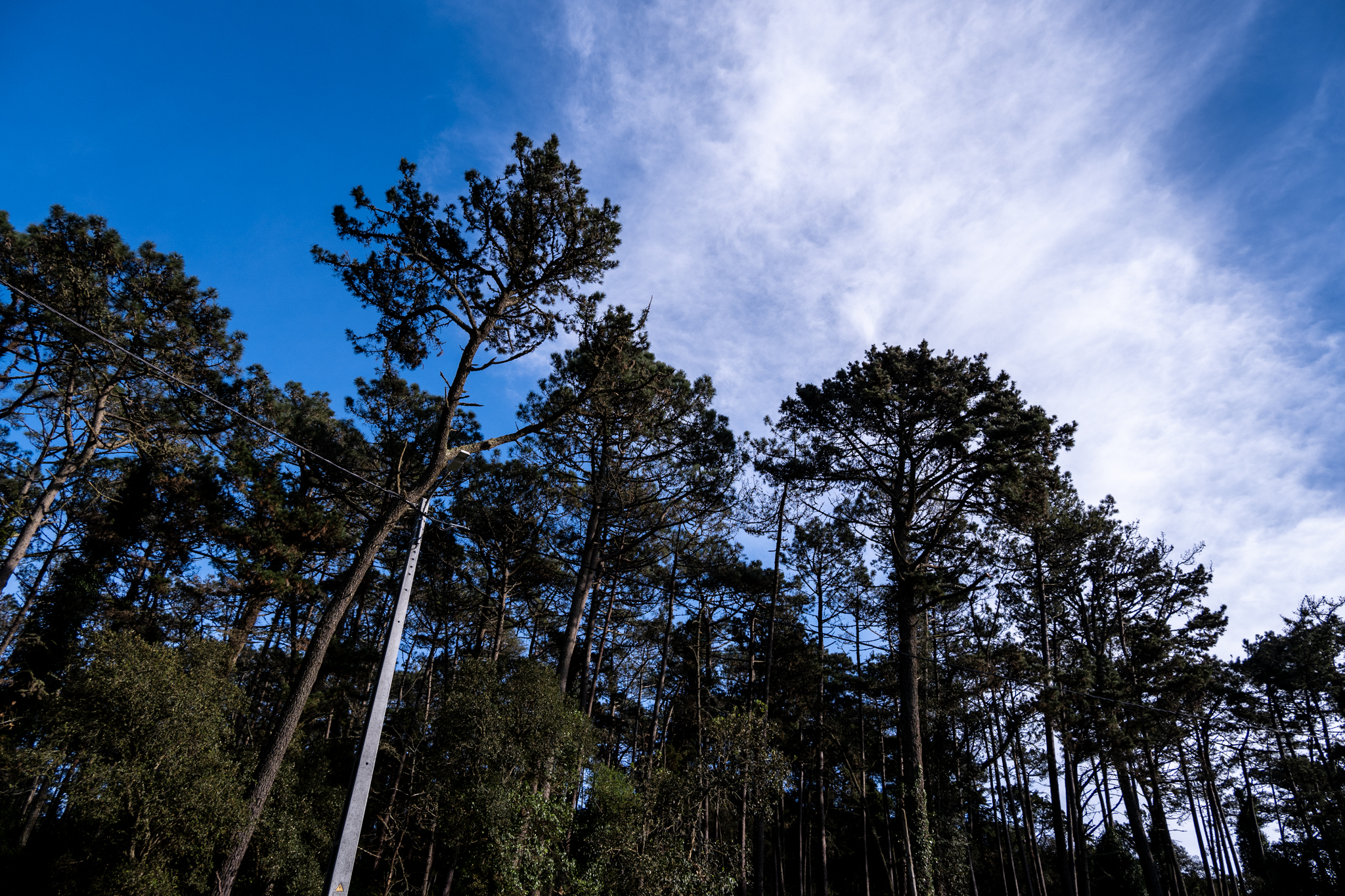
The association ADN.ambiente has been monitoring this felling and pruning work along national roads in Sintra and other parts of the country. "We were incredulous because we saw images of the size of the tree trunks." These words come from Gonçalo, one of the members of ADN with whom LPP spoke. "There were people from Raised Leaves [a collective concerned about the felling of trees along national roads, particularly in the districts of Leiria and Santarém] that got together and sent us photos and videos, and we wanted to come here to find out what was happening, and why."
Gonçalo Vieira explains that after the Pedrogão Grande fire in 2017, the law on the creation of protection strips in rural areas was changed and the minimum distance between the tops of maritime pines and eucalyptus trees was increased from 4 to 10 meters. For other trees, the distance remains at 4 meters. The aim of this difference with pines and eucalyptus is to promote the use of native trees, which are more resistant to fire, in these strips created to stop the advance of flames. The young biologist considers it a "exaggeration" this minimum distance required and points out that "the ten meters end up resulting in a lot of trees being cut down". "In other countries, the minimum distance between pine trees and eucalyptus is four meters, five meters, six meters. I don't know of any other with 10."
ADN.ambiente wanted to take advantage of its presence at the sit-in on the EN 247 to create a video, as they did in another case in Rio Maior, in the district of Santarém, where a "tree tunnel" on the EN 114 is at risk. "We launched a first video as an appeal and as a way of raising awareness and letting people know what's going on, not just in Rio Maior, but in Portugal, all over Portugal. We interviewed people who knew those trees and who live there"explains Mariana Magno. "We came here to get to know each other and possibly make video recordings, photographs, to launch a new appeal and prove that this isn't just a local issue. It's happening all over Portugal."
In the first half of 2023, the "sale of waste" from cutting down trees, for example, represented 4.3 million euros for Infraestruturas de Portugal's accounts, 143% more than in the same period of 2022, as indicated in Annual Report the public company. Meanwhile, last Sunday's protest/concentration has already resulted in a WhatsApp group and the preparation of an open letter to be published soon.
